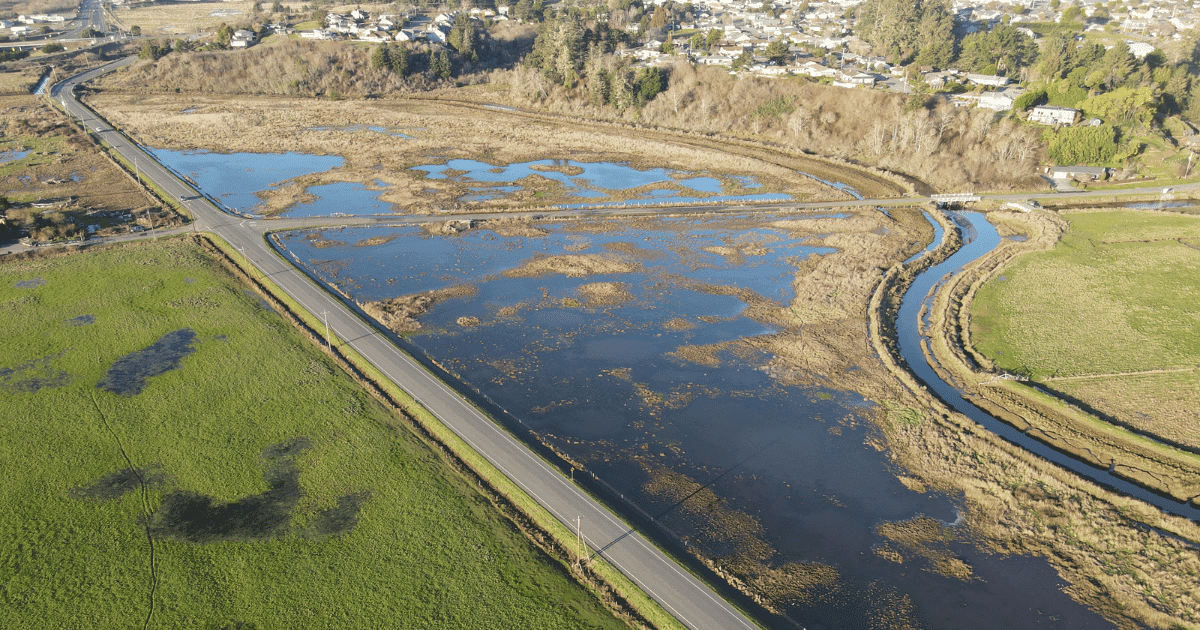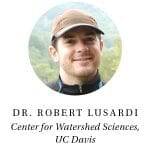NOAA Announces Funding for CalTrout Restoration Project in Humboldt County, an Investment in Coastal Resilience
NOAA announces $6 million grant to Humboldt County restoration project as part of $75M investment to increase resilience in coastal zones
CalTrout secured funding to break ground on decade-long planning effort to restore function to Elk River estuary, protect working lands, and support recovery of native fish
Humboldt County residents have something new to celebrate this Earth Week, with the announcement of a $6 million grant from the National Oceanic Atmospheric Administration (NOAA) to fund long-planned efforts to restore the Elk River watershed. The funding will support the first of several phases of the Elk River Recovery Program which includes a suite of restoration actions along approximately 14 miles of river channel from Highway 101 to portions of the North and South Forks of the river. Non-profit lead California Trout collaborated with Elk River communities, local advocacy organizations, agencies, consultants, and the Wiyot Tribe to develop the Recovery Program.
“After ten years of community engagement, planning, and permitting, we’re excited to finally be able to get to work,” said Darren Mierau, North Coast Regional Director with CalTrout. “The Elk River has taken a beating over the years due to shortsighted land use decisions. This is the first step in a multi-phase project to help bring this watershed back into balance so that agricultural activity can continue with fewer impacts on water quality and wildlife. It’s also a critical part of a region-wide effort to improve habitat for native salmon and other aquatic species.”
Funding for this phase of the Recovery Program, which focuses on priority actions within the Elk River estuary, is coming from the 2022 Bipartisan Infrastructure Law and directed through NOAA as part of a nationwide effort to improve the resilience of coastal lands under threat from sea level rise. As described by NOAA, this phase “is the initial implementation step of a decades-long, community-based program to resolve legacy sediment and water quality impairment issues from excessive timber harvest, while also providing regional resilience to sea level rise and large episodic storm events. The project is intended to improve hydrologic and sediment processes, water quality conditions, and aquatic and riparian habitat functions in Elk River, ultimately reducing nuisance flooding in rural residential properties and agricultural land in this economically disadvantaged community.” With this funding, CalTrout will reconstruct tidal marsh restoration along Swain Slough, restoring this important habitat type and increasing resilience of this land to sea level rise.
The lower Elk River valley was once an ecologically rich landscape, comprised of dunes and tidal marshes, prairie grasslands, deciduous and coniferous forest, and wetland habitat that supported aquatic species. Restoration of this area is crucial to the ecological function of the Elk River watershed, and to the recovery of salmon, steelhead, and other state and federally listed fish and wildlife. The land is also vulnerable to sea level rise, and conversion to salt marsh is already occurring in unmaintained pastures, resulting in a loss of working lands important to the local economy.


A prior $5.5 million grant from the Coastal Conservancy was also critical in supporting engineering design, permitting compliance, and funding for acquisition of up to 175 acres of former tidal marsh from willing landowners. “Our planned land acquisitions and restoration work in the Elk River estuary are part of a managed retreat strategy that will allow local ranchers to move operations to higher ground while creating space to increase the resilience of the estuary ecosystem to climate change,” added Mierau. “This work brings significant regional economic benefits, both in providing millions of dollars directly for the restoration activities and in ensuring the area can continue to support productive agriculture.” CalTrout will announce the acquisition once plans have been finalized with the current and future landowners.
The NOAA-funded phase of restoration will include removing and upgrading existing drainage infrastructure; reducing or removing levees; restoring tidal slough channels and their connectivity to mainstem channels; and creating features for seasonal waterfowl and winter salmon rearing habitat. Other activities will include managing invasive vegetation and expanding native plant communities. The project has been designed with climate resilience in mind, and ongoing monitoring of the project will allow it to serve as a template for future climate change response and retreat strategies in Humboldt Bay and the nearby Eel River estuary.
"We're deeply grateful to NOAA's Coastal Zone Management program for their generous support, particularly as state funding diminishes. This award marks a pivotal moment in our mission to protect and recover wild fish and their habitats,” added Curtis Knight, CalTrout’s executive director. “This project aligns with our overall mission to restore and support healthy habitat for California’s native fish, which in turn leads to better land and water management and clean water for the people who depend on our shared natural resources – namely, all of us.”
Recovery of the Elk River watershed is a collaborative effort between CalTrout and the ranching/dairy community; non-profit conservation and advocacy organizations including Salmon Forever, Environmental Protection Information Center, the Pacific Coast Federation of Fishermen’s Association; the Wiyot Tribe; timberland owners; State and Federal agencies; a dedicated team of consultants including Northern Hydrology and Engineering, Stillwater Sciences, GHD, and others; and Elk River residents. Mierau acknowledged Elk River communities who have worked to recover the Elk for decades as well as all Elk Recovery Program participants who donated their time, historical recollections, photographs, and access to their properties so the CalTrout-led team could explore and learn about the river, watershed, and social setting. “We cannot thank you all enough for your commitment to the Elk River,” Mierau said.
More information about NOAA’s Office for Coastal Management and its new awards for Coastal Zone Management Programs is available here: https://coast.noaa.gov/funding/infrastructure.html. Today’s announcement of 22 projects across 16 states (coastal zone management) and eight projects across seven states (research reserves) will advance the resilience of coastal communities across the country. Award information is available here.





